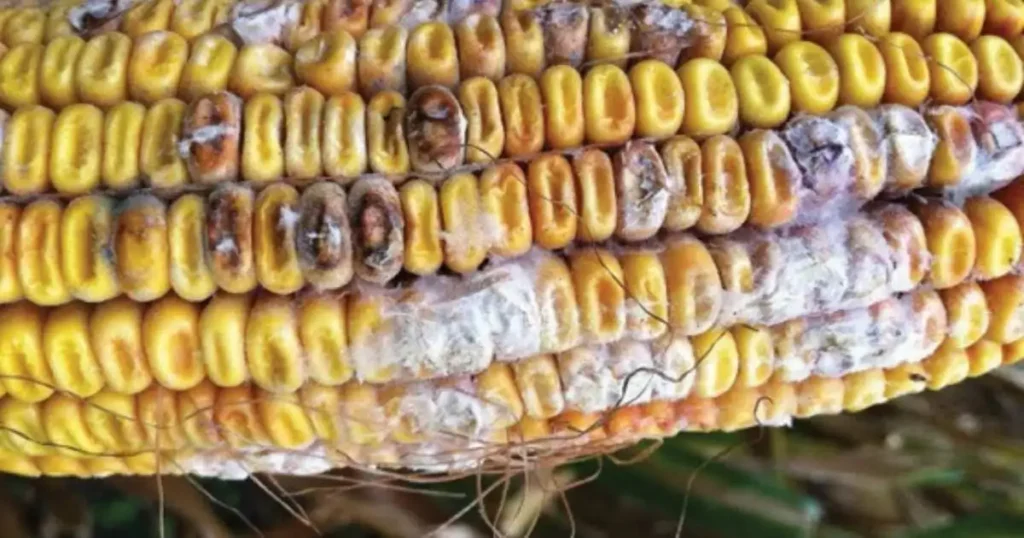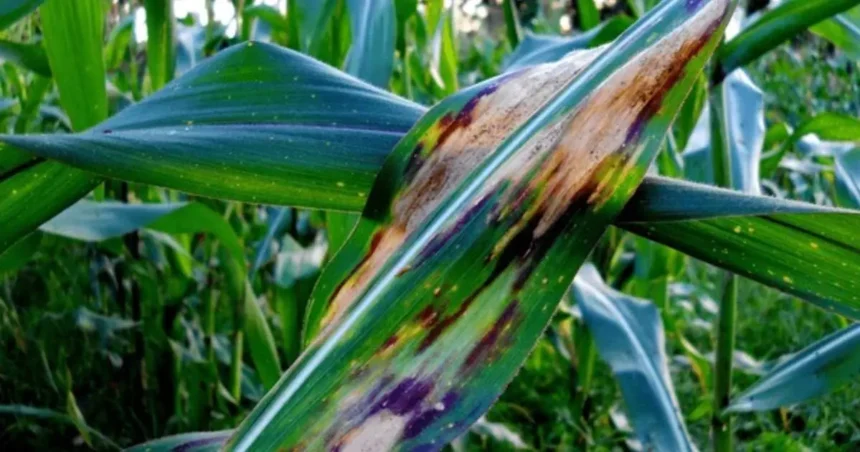Corn disease threat to crops is spreading across the US Midwest where farmers are battling southern rust and tar spot during a year that was expected to deliver record harvests. Experts warn the severity of disease pressure in 2025 is unlike anything seen in decades raising concerns about yields harvest conditions and farmer profits.
Outbreak Across the Midwest
High levels of fungal infections are now spreading through corn fields across major producing states including Iowa Nebraska Wisconsin and Minnesota. The two primary culprits are southern rust and tar spot which are spreading earlier than usual. These diseases weaken corn leaves and disrupt photosynthesis which reduces kernel size and overall yields.
Plant pathologists say this year’s outbreak is especially alarming. Alison Robertson a researcher at Iowa State University said she has never seen disease as severe as this season. With weather conditions providing the perfect environment for fungi to grow experts warn the impact could stretch well into harvest.
Southern Rust Now the Top Threat
Southern rust usually arrives in the Midwest late in the growing season which limits its damage. This year it appeared as early as July in Iowa the largest corn producing state. The early arrival gave the disease weeks to spread unchecked across fields.
According to the Crop Protection Network southern rust can cut yields by as much as 45 percent. The hot and wet summer created ideal conditions for the fungus to thrive. Farmers who walked into their fields last month described leaving with rust colored dust on their sleeves which showed how far the infection had spread.
Tar spot has also been reported in many states. Like rust it weakens corn plants and reduces their ability to turn sunlight into grain. Together these diseases are expected to lower production despite one of the biggest corn acreages planted in years.
USDA Yield Estimates Under Pressure

In August the US Department of Agriculture predicted a record yield of more than 188 bushels per acre. Analysts now expect the agency to lower its forecast in the upcoming monthly report. Even if yields are slightly reduced the crop will still be one of the largest in history ensuring plenty of supply.
Still many farmers worry about their own fields. Some report losses of 30 bushels per acre even after spraying fungicides. Others fear weakened stalks will make harvesting difficult since diseased plants are more likely to collapse before machines can collect them.
Costly Battle for Farmers
Fungicides are the main defense against corn diseases but they add significant costs at a time when farmers already face low grain prices and high expenses for fuel seed and fertilizer.
For some the expense of spraying was unavoidable. Iowa farmer Roger Cerven said the fungicide was a band aid when what they needed was a tourniquet. Despite treatments he still fears large losses.
Others face mechanical challenges as well. When plants redirect sugars away from stalks to fill kernels the stalks weaken and collapse in fields. This makes harvesting both dangerous and inefficient. One pathologist compared the process to driving through a pile of pick up sticks.
Widespread Regional Impact
Reports from across the Corn Belt show how widespread the problem has become.
- In Nebraska southern rust has been the most damaging corn disease for the second year in a row.
- In Wisconsin agronomists are reporting levels of infection they have never seen before raising fears about yields.
- In Minnesota experts say warm temperatures and heavy rains created perfect conditions for fungal growth.
With outbreaks now confirmed in at least twenty states the corn disease threat to crops is considered the most serious in many years.
Long Term Concerns
While fungicides can help limit some of the damage the early arrival and strength of this year’s diseases raise bigger questions about the future. Climate change is altering rainfall patterns and extending periods of heat and humidity which creates conditions where fungal outbreaks thrive.
Farmers had hoped for a record harvest to offset low prices and rising costs. Now many fear the true impact of these diseases will only be clear once harvest begins in the coming weeks.














